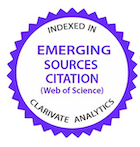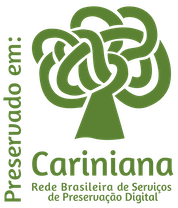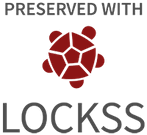Efeito de diferentes técnicas de enriquecimento ambiental em cativeiro de onças suçuaranas (puma concolor)
DOI:
https://doi.org/10.1590/1809-6891v19e-47693Resumo
Objetivou-se avaliar os efeitos da implementação de diferentes técnicas de enriquecimento ambiental sobre a atividade comportamental de onças suçuaranas (Puma concolor) mantidas em cativeiro. Para este estudo, foram utilizadas cinco onças suçuaranas, quatro machos e uma fêmea, pertencentes ao Zoológico Municipal de Ribeirão Preto-SP. Para fins de enriquecimento ambiental, nos recintos dos felinos foram introduzidas bolas confeccionadas com cipó e sisal e, também, caixas de papelão com carne bovina ou erva cidreira e canela. Os dados de comportamento foram submetidos à análise descritiva. Mesmo em cativeiro, os animais apresentaram comportamento de demarcação territorial, como urinar e rugir em alguns momentos em que se sentiam ameaçados. Ademais, foi verificado um maior interesse das onças pelas caixas de papelão com carne bovina em detrimento daquelas que continham erva cidreira e canela. Foi observado também um entretenimento das onças com as bolas de cipó e sisal. Esses achados sugerem êxito nas estratégias de enriquecimento ambiental estudadas, o que foi evidenciado pelo interesse dos felinos nos diferentes materiais avaliados. Além disso, os enriquecimentos utilizados neste estudo são estratégias simples e de baixo custo que contribuem para o bem-estar de onças suçuaranas (Puma concolor), podendo ser aplicadas em outras instituições que abrigam esses animais.
Palavras-chave: Ambiência; Bem-estar; Comportamento animal; recinto
Downloads
Publicado
Como Citar
Edição
Seção
Licença
Copyright (c) 2018 Ciência Animal Brasileira

Este trabalho está licenciado sob uma licença Creative Commons Attribution 4.0 International License.
Autores que publicam nesta revista concordam com os seguintes termos:
- Autores mantém os direitos autorais e concedem à revista o direito de primeira publicação, com o trabalho simultaneamente licenciado sob a Licença Creative Commons Attribution que permite o compartilhamento do trabalho com reconhecimento da autoria e publicação inicial nesta revista.
- Autores têm autorização para assumir contratos adicionais separadamente, para distribuição não-exclusiva da versão do trabalho publicada nesta revista (ex.: publicar em repositório institucional ou como capítulo de livro), com reconhecimento de autoria e publicação inicial nesta revista.
- Autores têm permissão e são estimulados a publicar e distribuir seu trabalho online (ex.: em repositórios institucionais ou na sua página pessoal) a qualquer ponto antes ou durante o processo editorial, já que isso pode gerar alterações produtivas, bem como aumentar o impacto e a citação do trabalho publicado (Veja O Efeito do Acesso Livre).






























